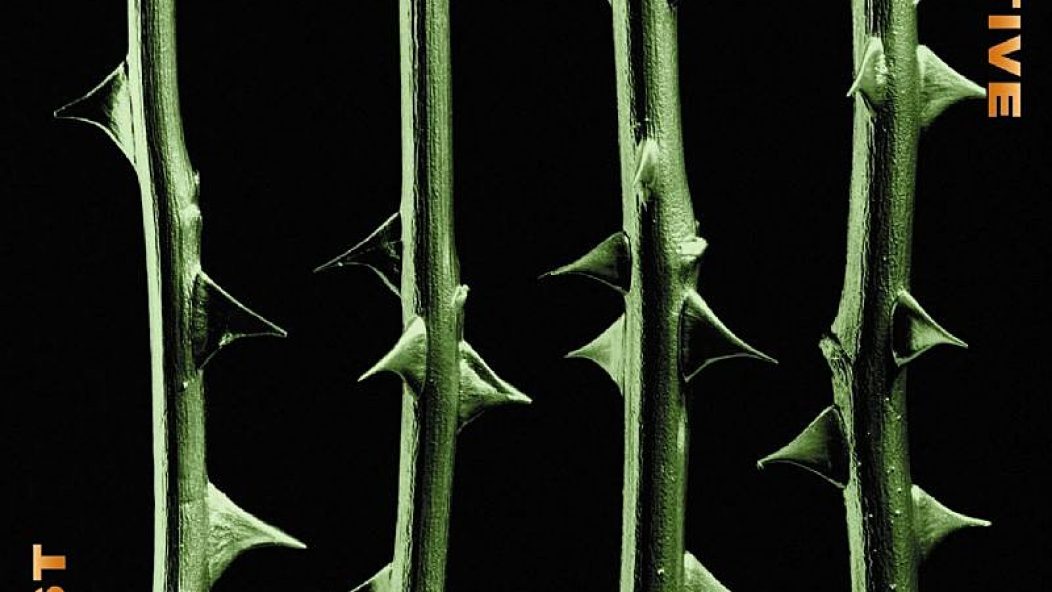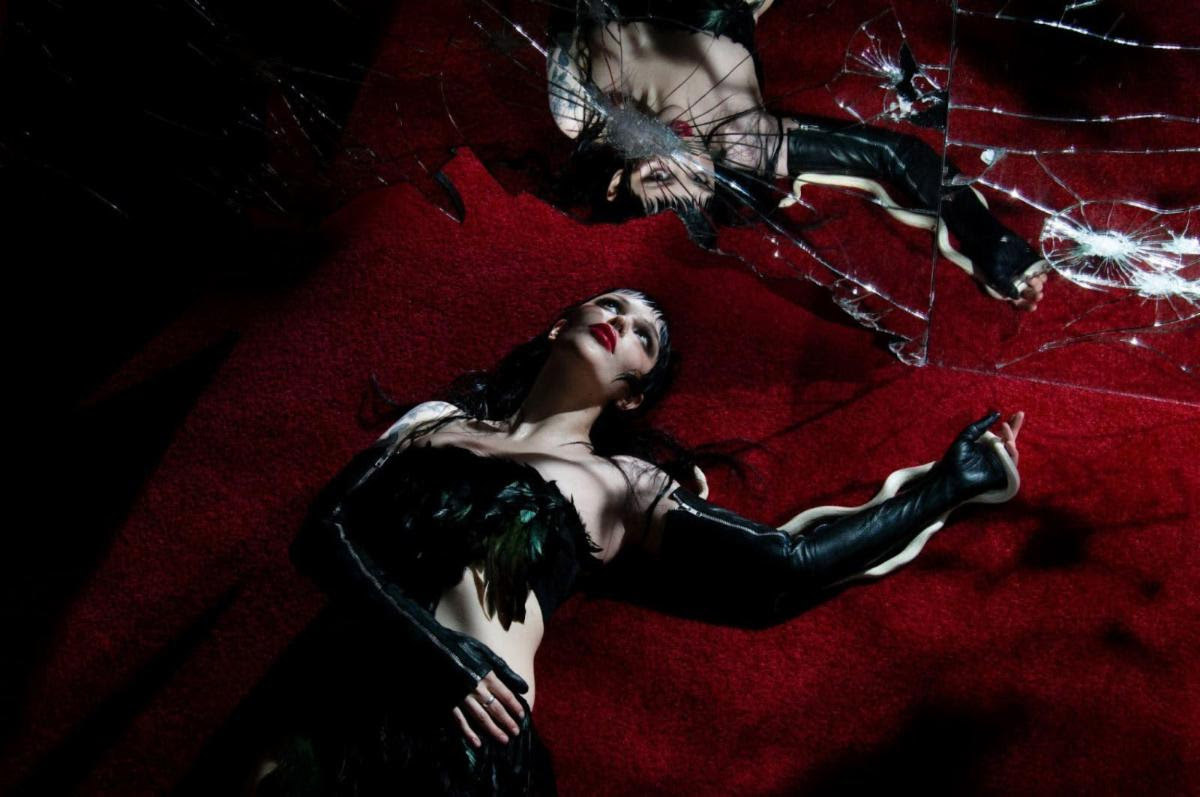
Type O Negative's 'October Rust' Turns 20
…
For the unprepared, the two curveball tracks that open October Rust come across as the kind of pointless indulgences that marred the compact disc era. Track one is forty seconds of low buzzing meant to sound like a malfunctioning speaker. Track two is a direct message from the band delivered in their thick New Yawk accents, telling the listener to enjoy the proceeding album they “spent a couple months gettin’ high and workin’ on.”
It’s an arch way to kick off an album this lush and entrancing, but Type O Negative (known affectionately as The Drab Four) were masters of this kind of self-deprecation. It’s as if they worried that the album’s rich blend of doom metal, goth, darkwave and classic rock was too beautiful and serious not to be tampered with a little bit.
In an interview conducted around the time of the record’s release, frontman/bassist Peter Steele sounded blasé about his group’s latest artistic achievement. All that ethereal, layered atmosphere? “Reverb drowns out all the errors.” What about taking a ubiquitous smash hit, Neil Young’s “Cinnamon Girl,” and successfully re-imagining it as your own? “…only four chords—which is all we know.” Well, how about those lyrics, some of the most memorable renderings of lost love in all of heavy metal? “Everyone gets screwed over … I’ve had many different girlfriends. I prefer tall women so I don’t have to bend down to kiss them because I have back problems.”
…
…
Steele’s outsized personality was as crucial to the identity of Type O Negative as Lemmy’s was to Motorhead. He cut his teeth in the (more) politically incorrect crossover group Carnivore, but Type O is the outlet that allowed him to really open up. He never lost his sense of humor—instead, he used it to guide him and his band through some very dark and disturbed moods: homicidal rage, suicidal fantasies, the emptying ache of lost love, the stupid cruelty of death.
October Rust is the least overtly nihilistic Type O’s album. Most of the songs are vignettes about love, sexuality and loss. In “Love You to Death,” Steele and his partner take turns exploring their submissive and dominating sides. With his best Danzig impression, he personifies her hips and lips, “they say the beast inside of me is gonna get ya,” before summoning his own inner animal for the final verse. Kink takes center stage in the bouncy Doors meet B-52s romp of “My Girlfriend’s Girlfriend,” and the vaguely pagan-ish “Wolf Moon,” an ode to giving cunnilingus to a menstruating lover. Sexual pleasure as a theme in heavy metal largely died out with glam, but Type O revitalized the topic by turning the tables on the idea of the male frontman as mere sexual conqueror. “I’ll do anything to make you come,” Steele intones in a reverent baritone on the alt-rock tinged “Be My Druidess.” When he delicately sings “Am I good enough for you?” at the end of “Love You to Death,” his vulnerability represents a mature transformation from the psychopathic “Kill You Tonight” persona he adapted on the first couple records.
…
…
Elsewhere, he pines over old flames on “Burnt Flowers Fallen” and “Haunted,” but the most unique and tragic depiction of the absence of love comes on the album centerpiece “Red Water (Christmas Mourning),” where Steele curses the holiday season for being a reminder of dearly departed loved ones. “The stockings are hung, but who cares? / Reserved for those no longer there / Six feet beneath me sleep / Black lights hang from the tree.” Josh Silver’s eerie keyboard nods to yuletide standards “Carol of the Bells” and “God Rest Ye, Merry Gentleman” show an admirable commitment to making things even more despondent. The song was inspired by the death of Pete Steele’s father, and, as terrific as it is, it’s not surprising that it was too personal for the band to ever play live.
Musically, October Rust is the most melodic and consistent of the band’s oeuvre. There’s none of the jokey thrashcore blurts or industrial clanging of the previous records. Guitarist Kenny Hickey still churns out plenty of head-rolling Sabbath riffs, and Steele’s inimitable bass is still a driving force, but they’re more balanced in the mix with Silver’s playing. His soft, ringing keys, Hickey’s ethereal swirls of guitar, and an increased focus on harmonies suggest influences like Sisters of Mercy, Dead Can Dance, Bauhaus, Cocteau Twins and the bleakest moments of The Cure. But this is still very much a doom album. Check out the sludgy “In Praise of Bacchus,” featuring some of the album’s heaviest riffs and a sly descending-note bass riff from Steele.
The untimely death of Steele in 2010 put a permanent end to the band’s two-decade career. For all their doom and gloom, Type O were pretty commercially successful for being an indie label metal band. October Rust was certified Gold, while predecessor Bloody Kisses went Platinum. Their sound drew in droves of metalheads and goth kids alike, and the band also appealed to some extreme metal fans who were put off by the groove metal sound of the other big metal bands of the 90’s.
Despite all the impact they had on the scene, their sonic template doesn’t feel as dominant today as that of sub-genre founders like Sleep, Thergothon and Candlemass. Still, the lasting imprint of the group is noticeable among some of doom’s biggest new names. It’s there in the dark campiness of Ghost. Or in the more explicit “Black Sabbath meets The Beatles” sound of Uncle Acid and the Deadbeats. Pallbearer even performed a Halloween cover set as the group last year and just released their version of “Love You to Death”. None of these bands sound exactly like Type O, but that’s kind of the point. The legacy of the group shouldn’t be to inspire copycats, but to encourage bands to follow their own muse. Develop a diverse but complementary set of influences. Don’t be afraid to grow as songwriters and take risks. Maybe even learn to laugh at yourself a little bit.
…
…











